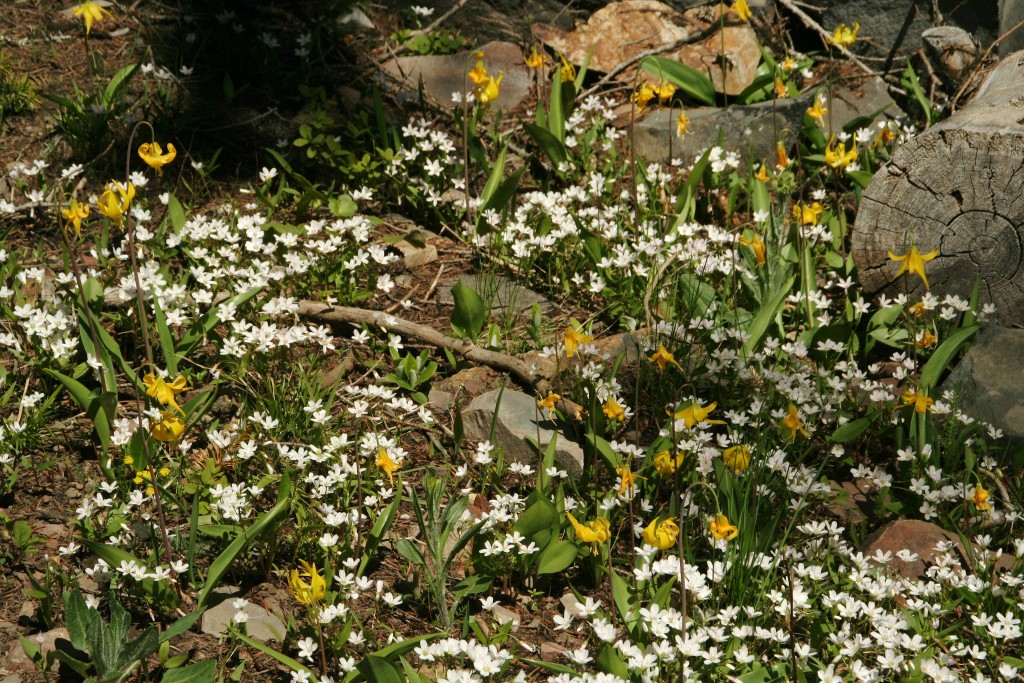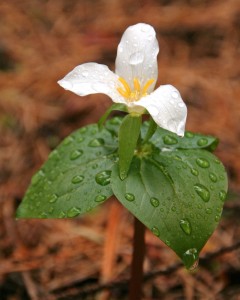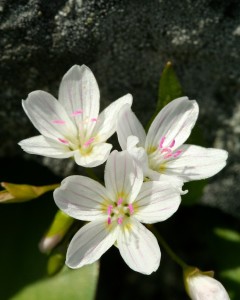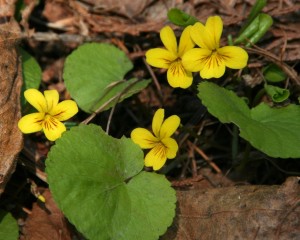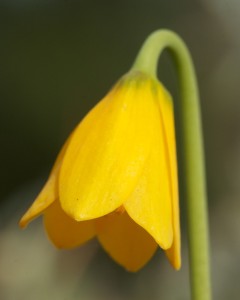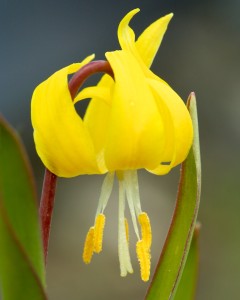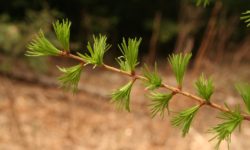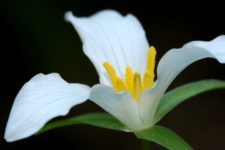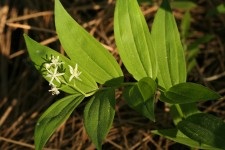As the weather warms, signs of spring are everywhere–green grass, emerging larch needles and spring wildflowers. The burst of color from spring wildflowers is a welcome sight after winter.
There are several spring wildflowers to look for as the snow melts and the days become warmer, most notably the western trillium, western spring beauty, violets, yellow bells and yellow glacier lilies.
Whether they bloom in early, mid- or late April depends on the weather but these five are usually the first wildflowers emerging. Depending on elevation, however, they can be found as late as midsummer in the high mountain meadows.
These five spring wildflowers are the beginning of a palette of color that will paint the woods, mountain meadows and hillsides over the next several months.
Western white trillium
The western white trillium is one of the first wildflowers to emerge in the woods which is why it is often called the wake-robin.
The ‘tri’ in trillium is one way to remember the identifying characteristics of the trillium since all the major parts come in three–three leaflets, three sepals and three petals. The single white flower sits above the three broad leaves and the three green sepals alternate with the three petals. After fertilization or as the flower ages the petals turn pink.
Trilliums add a splash of color to stream banks, open and deep woods, and other moist shaded areas.
Western Spring Beauty
Soon after the snow melts on open, moist grassy slopes, the spring beauty will emerge. The white dime-sized flower sits atop a two- to six-inch tall stem. Pink veins adorn the five petals that are notched at the tip.
While they may be pretty, the spring beauty is also an important spring food source for black bears, grizzly bears and burrowing rodents. Each plant has a carbohydrate-rich corm (a spherical portion of the stem underground about the size of a marble) that these mammals dig up and eat.
Violets
Violets are another small flower that add color to moist woods and meadows. All violets have five petals with one petal developing into a spur-like pouch.
There are several species of violets in the region identified by the flower’s color. The stream violet (also called the yellow wood violet or yellow violet) is yellow. The round-leaved violet is lemon-yellow to gold. The Canada violet is white with a yellow base while the kidney-leaved violet has pure white flowers. The early blue violet ranges from blue to deep violet.
Yellow bell
As the name implies, the yellow bell is a small, bell-shaped yellow flower that droops from the stem. The yellow bell is also called goldcup or yellow fritillary. The yellow bell appears in meadows and open woods including open ponderosa pine forests.
As a member of the lily family, the flower is three-parted. Like most lily species, the petals and sepals of the yellow bell are so similar that the flowers appear to have six petals.
The yellow bell also has a starchy corm sought after by grizzly bears, black bears, pocket gophers and ground squirrels.
Yellow glacier lily
Painting mountain meadows with a carpet of yellow after the snow melts is the yellow glacier lily, also called the snow lily, fawn lily, dogtooth violet and avalanche lily. The yellow glacier lily is often found at the edge of retreating snowbanks taking advantage of the moisture. Often the glacier lily is intermixed with the western spring beauty.
The single golden-yellow flower droops down with the petals curving backward and the red or yellow anthers hanging below.
Originally posted April 2014. Updated April 2024.

